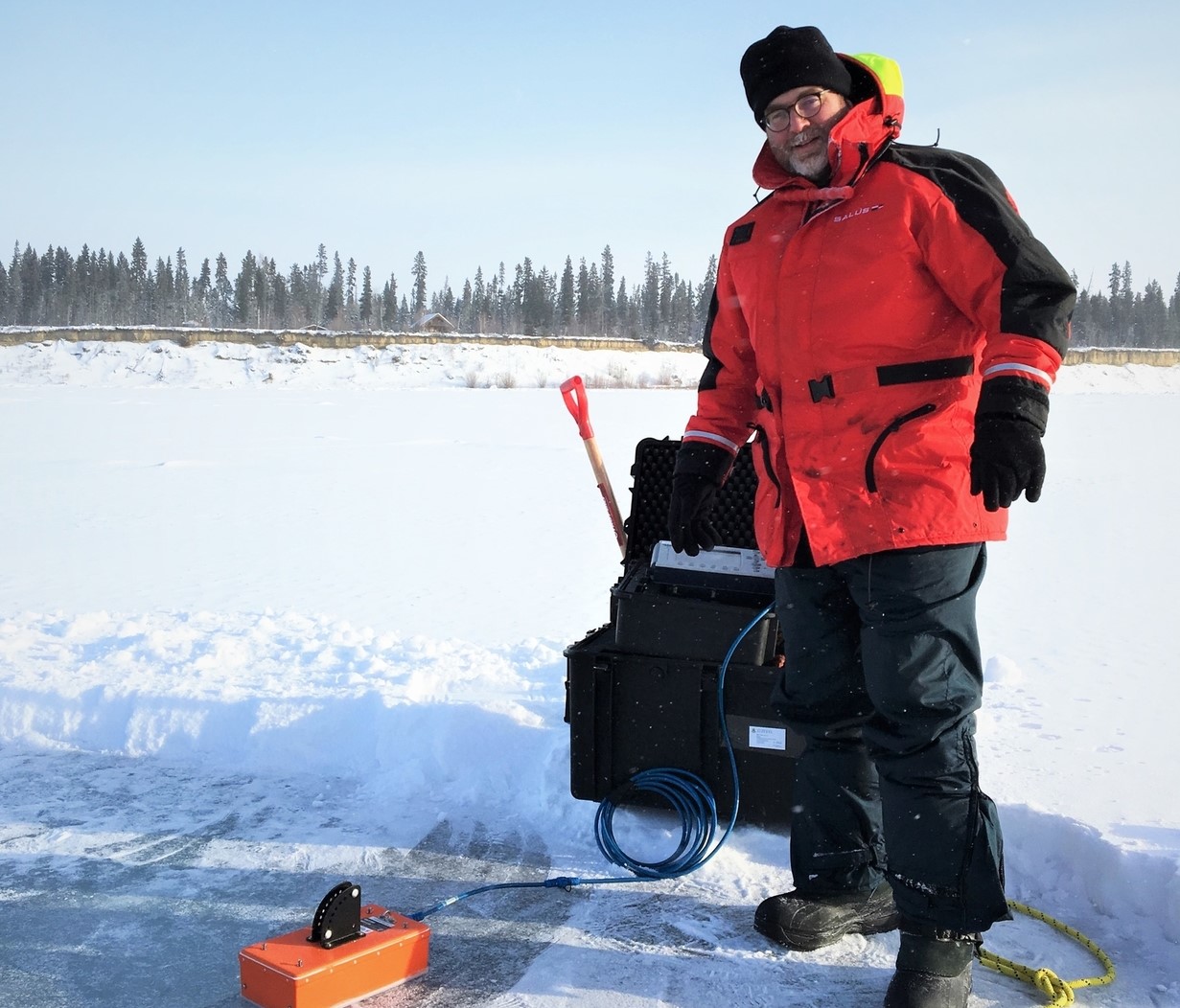
IMPC introduces Dr. Karl-Erich Lindenschmidt as the new Co-Principal Investigator for the project
Dr. Karl-Erich Lindenschmidt joins Dr. Saman Razavi as lead co-principal investigators just as Phase II of the program kicks in.
By Laila BalkhiAlong with an announcement for renewed funding for Phase II (Year 2020-2023), the Integrated Modelling Program for Canada (IMPC) team proudly welcomes Dr. Karl-Erich Lindenschmidt as an additional Principal Investigator to lead the program alongside Dr. Saman Razavi.
Dr. Lindenschmidt, an Associate Professor at the University of Saskatchewan’s School of Environment and Sustainability, researches a range of topics in hydrology, including water quality modelling, river ice processes, climate change, river morphology, and flood risk management. He has been involved with IMPC since the program’s inception in 2017.
“Having been in IMPC for the past few years, I really liked the idea of scaling up our modelling efforts to a Pan-Canadian scale. And what’s unique about it is that it also integrates social science into the modelling too, so it adds the human aspect to it. I think taking this job is an opportunity for me have a higher level of influence in our integration and upscaling efforts to the Pan-Canada scale”, adds Dr. Lindenschmidt.
In addition to extensive teaching and research experience, Dr. Lindenschmidt also brings his expertise as a practitioner to the table. He has experience working as a Hydrologic Modelling Research Engineer for the Government of Manitoba, and as an engineer in the Integrated Water Resources Management at the Mott MacDonald Group in UK, just to name a couple.
In the past three years in IMPC, Dr. Lindenschmidt led the testing of model integration efforts for large-scale water quality modelling, including sediment, nutrient and contaminant transport by integrating hydrology and land surface models such as MESH with water quality and stream temperature models such as WASP and RBM in the Athabasca River Basin. In Phase II, these efforts will be extended to large portions of the Nelson-Churchill.
He also led the development of modelling techniques that utilize remote sensing tools to simulate the impact of climate change on river ice processes (MESH and RIVICE) to improve river ice jam forecasting. He has successfully tested these models in the Peace-Athabasca Basin, Saint John River, Churchill and the Exploits rivers, and most recently, the Red River.
As the program transitions into its second phase, Drs. Razavi and Lindenschmidt are hoping to focus more on integrating independent modelling efforts among various themes of the project. Dr. Lindenschmidt explains, “What inspired me with Phase I of IMPC was that we did a lot of integration of models and incorporating some social components into them, and so with Phase II, we want to do that more. So, not just couple one model to another but extend that integration to three or more models and expand our water modelling capabilities. As an example, we want to be able to simulate water flow with say, sediments and contaminants that determine water quality, but we also want the models to tell us what hazards the same water flow poses, e.g. flooding or ice jamming.”
IMPC’s Phase II will be kicking off amid the COVID-19 crisis with unpredictable challenges ahead, but the research integration plans will carry on, albeit, from a safe social distance.
Learn more about Dr. Karl-Erich Lindenschmidt’s work by following this link.
The Integrated Modelling Program for Canada (IMPC) is a transdisciplinary research program bringing together scientists and stakeholders from six Canadian universities, twelve government agencies and more than ten end-user communities. This team provides a unique expertise that integrates atmospheric science, hydrology and ecology with social science, computer science, economics, and water resource engineering. Explore IMPC Website to learn more.
IMPC is one of the 39 Global Water Futures (GWF) program, which is a University of Saskatchewan-led research program that supports leading-edge water science and aims to develop innovative decision-making tools to manage water futures in Canada and other cold regions. To learn more about the Global Water Futures program, follow this link.

